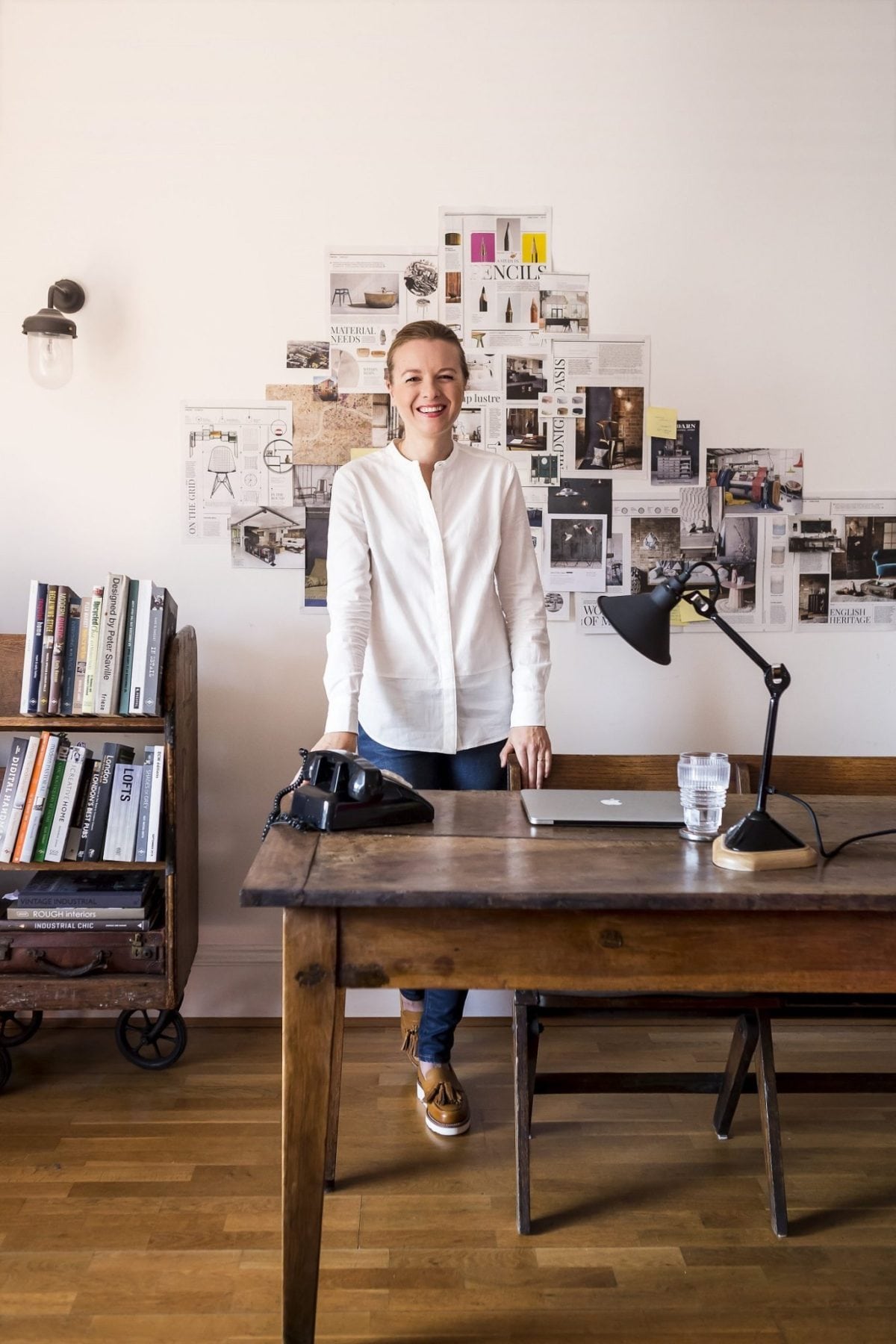
Why did you start Warehouse Magazine?
In 2012, I bought my home in a warehouse conversion in East London. Through the process of searching for furniture, lighting and decorative accessories to suit its original features – exposed brickwork, columns, loading bay doors – I realised that the industrial aesthetic was absolutely everywhere. Hotels, restaurants and bars are all channeling the industrial look – and a large number of homeware retailers are catering to it too. I had worked in magazines for years and launched two successful ventures for a leading magazine publisher. But I left my job in 2014, keen to launch a business of my own and knowing I’d spotted a gap in the market. The debut issue of Warehouse Home was published in November 2014.
How has the brand evolved since the launch of the magazine?
We had so many requests to make print copies of Warehouse Home magazine even more widely available (it has always been distributed free of charge directly to high-end warehouse conversions in the UK), that we have started to confirm select independent retailers to sell the magazine – in the UK and overseas. We’ve also launched an online subscription service, which is proving incredibly popular. We also run an online shop, stocking many of the designs featured in the magazine together with furniture, wallpaper and lighting created exclusively for Warehouse Home. And the debut Warehouse Home book has been published by Thames & Hudson – there will be various exciting events to coincide with it’s launch in April.
The book sounds interesting, how does it differ from the magazine?
Our magazine covers iconic architecture, interiors trends, home styling and real homes. The debut Warehouse Home is devoted to showcasing the most incredible homes all around the world, in former factories, printworks, mills and of course warehouses. It covers properties in San Francisco, Sydney, London, Hong Kong and a host of locations in between, revealing the original features of these unique homes and the ways in which they have been preserved and celebrated. The book also includes a section on ‘decorative details’, with tips on channeling a similar industrial aesthetic with things like brick-inspired designs, upcycled aviation parts and more. It’s 320-pages of pure interiors inspiration!
Are there any exciting future plans for Warehouse Home?
Warehouse Home has grown rapidly in the last two years. The digital edition of the magazine has already been read in over 100 countries! But there are ambitious plans to grow the Warehouse Home brand even further over the coming months. In addition to raising angel investment, we’ve received a number of enquiries about crowdfunding. And we’re keen to enable our dedicated readers to share in Warehouse Home’s exciting journey. So, on 13th March we’ll be launching a crowdfunding campaign with Seedrs – a platform which enables anyone to invest in businesses they believe in from as little as £10. It’s easy to register and we would love as many people as possible to watch our video and hear what we have planned.
Have you always been interested in interiors?
When I was at university I was involved in set design for student productions and as soon as I had graduated I headed straight to London and worked for several leading design magazines including Frieze and The World of Interiors. As I was offered various opportunities and promotions, I deviated slightly from interiors whilst still remaining in magazine publishing. It was the purchase of my first home that gave me the nudge I needed to pursue my own business venture and I launched Warehouse Home.
How would you describe your style?
My home is characterised by exposed brickwork, steel columns and large loading bay doors which let in plant of natural light. Inspired by the building’s heritage, I’ve adopted a vintage industrial style and spent a lot of time sourcing original furniture and lighting from places like The Old Cinema, LASSCO and Retrouvius. I’ve had quite a bit of success with finds on eBay too. One of my favourite pieces is a gorgeous little school desk – it’s too small to actually sit at but it serves as a lovely side table!
What makes a happy home?
For me, it’s my loved ones. And then of course beautiful decor.
Do you have any design rules?
The great thing about channelling an ‘industrial style’ is that you can combine raw, vintage and contemporary elements. If you’re lucky enough to live in an industrial conversion with original features like exposed brick – these buildings provide such unusual backdrops that there really are no ‘rules’! These elements can take a bold scheme and one or two heavy-duty designs will really enhance the unique character of the building. But contemporary apartments and country houses can easily accommodate industrial touches too – start with smaller items, such as light fixtures and decorative accessories, to build your confidence.
How important is art in interiors?
I place a huge amount of importance on art in my own home, as I think it can really transform an interior scheme. But it doesn’t need to be expensive! I have several vintage signs within my home that are full of character and add real visual interest. The combination of different typographic prints is really striking. I also like to combine wall art and letterpress designs with black and white photographs from family albums.
How important is colour?
The great thing about an industrial conversion is that its features lend themselves equally well to a monochromatic scheme as to the use of vibrant or muted colours. Bare brick and raw concrete are effective backdrops for black and white decorative accessories combined with metal and wood but their tones and textures can also offset vibrant blocks of colour or deeper hues in a really effective way.
Where do you seek your inspiration?
Industrial conversions are filled with grit and character. There’s an authenticity and originality to such properties and their features, and a real sense of heritage. These are not cookie-cutter homes. Every property is unique. That’s really inspiring. I can happily spend hours surfing the internet, pouring through books and magazines in search of the emerging trends and talents.
What are your top interior design tips?
Be guided by the dimensions and distinctive features of each room. Pay careful attention to natural light and lighting effects. And don’t be afraid to experiment by moving things around. Explore new styles by incorporating smaller pieces first to see how they are effect the overall interior. More importantly, be true to your own individual style.
What would people be most surprised to know about you?
I’m a classic car enthusiast. But I don’t know that that’s wildly ‘surprising’….!









